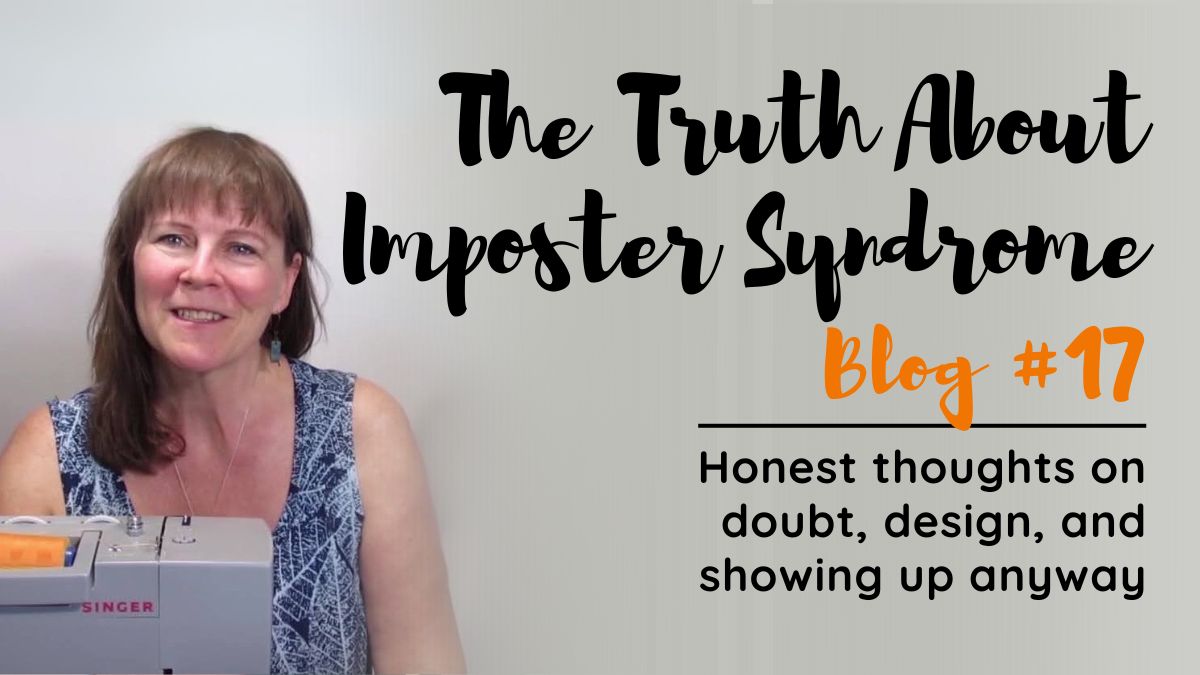The Truth About Imposter Syndrome (and How I Quiet That Voice)

How I handle imposter syndrome as a creative dog wear designer—and why empathy, not credentials, keeps me going.
Prefer to soak things in while walking the dog or sewing your next project?
This post is based on Episode 13 of the Thank Dog We Made It podcast, where I talk about how I deal with imposter syndrome as a creative business owner—and why empathy, not credentials, keeps me going.
🎧 Listen to the episode + view show notes here
Feeling Like a Fraud? You’re Not Alone
Imposter syndrome isn’t just a buzzword. It’s that subtle, nagging doubt that creeps in when you’re putting yourself out there creatively. It’s the voice that says, “Who are you to do this?”—even after years of showing up, helping others, and making real progress.
If you’ve felt it, you’re not broken. And you’re definitely not alone.
What Imposter Syndrome Sounds Like
For me, imposter syndrome sounds like:
-
“What if someone finds out I’m not legit?”
-
“I don’t have a fashion degree—should I really be teaching this?”
-
“There are people out there doing it better. Maybe I should leave it to them.”
That feeling doesn’t go away just because you’ve built a business or helped people. Sometimes, it gets louder the more you grow.
Even now, after more than a decade designing and teaching dog wear, I still catch myself hesitating. I still question whether I know “enough” or if someone else would say it better.
And yet—I keep going.
Why So Many Creative People Feel This
Imposter syndrome often shows up most intensely for people who genuinely care. People who practise, research, and try to get it right—not to chase perfection, but to be useful. These aren’t people with inflated egos. They’re people who feel a deep sense of responsibility for what they put into the world.
And here’s the part that always grounds me: this feeling doesn’t go away just because you “make it.” Some of the most successful, respected people out there have admitted to feeling like frauds at times.
-
Maya Angelou, despite writing 11 books, said, “Each time I think, ‘Uh oh, they’re going to find me out.’”
-
Tom Hanks, even after winning multiple Oscars, admitted, “No matter what we’ve done, there comes a point where… they’re going to discover that I am, in fact, a fraud.”
-
Emma Watson reflected, “Now when I receive recognition for my acting, I feel incredibly uncomfortable. I tend to turn in on myself. I feel like an imposter.”
-
Barbara Corcoran from Shark Tank shared “Who doesn’t suffer from imposter syndrome? Even when I sold my business for $66 Million, I felt like an absolute fraud!”
Knowing that famous, accomplished, highly visible people feel exactly what you do—it’s a powerful reminder that imposter syndrome isn’t a flaw. It’s often a signal you're reaching beyond your comfort zone, learning a lot, and genuinely caring about the work and people you serve.
How I Reframe It
When those doubts creep in, here’s what I try to remember:
I’m not here to impress. I’m here to guide.
That simple shift—from perfection to usefulness—has changed how I show up. When I focus on being helpful instead of being right, I relax into the work. I stop worrying about how I’m being perceived and start paying attention to what people need.
I’ve never been interested in flashy launches or picture-perfect marketing. What makes me feel successful is getting a message from someone who says, “I finally made a coat that fits,” or “Your measuring guide helped me understand dog anatomy for the first time.”
Action Over Perfection
The only way I’ve learned to manage imposter syndrome is by doing the work anyway.
That means:
-
Sticking to a structure (like a content plan)
-
Creating systems to get things done, even on the hard days
-
Letting progress—not perfection—be the goal
And just as importantly, it means staying connected to a community where it’s safe to not have all the answers. Because the worst thing you can do when you’re feeling imposter syndrome is isolate.
Finding the Right People
You don’t need a fashion degree to care. You don’t need a background in marketing to share your work. What you need is intention, empathy, and a genuine desire to help.
And yes—helping people make dog clothes that actually fit their pets? That’s real, meaningful help. That’s impact.
And you need people around you who get that.
That’s why I created the Creative Circle inside TDWMI—a private community for makers and aspiring pet wear designers who are figuring it out, just like you.
And if you’re still not sure where to start? I’ve put together a guide to help.
🐾 Ready to Take the Next Step?
If imposter syndrome has been keeping you quiet, you don’t have to go it alone.
-
Join the Creative Circle for support, connection, and honest feedback.
-
Download the free guide: Where to Find Your Creative People
This work isn’t about being perfect. It’s about being willing. Willing to try, to share, to help—even when your voice shakes.
And if you’ve read this far? You’re already doing it.
Categories: : Blog, Business, Pattern Making, Sewing
Ready to create dog wear that fits like a dream?
Grab my free 10-Step Measuring Workbook and Video Guide to start designing better-fitting patterns today.
Join My Mailing List
Sign up to be the first to know about exclusive offers, free tutorials, and new product updates.
I have read and agree to the terms & conditions.

 Jill Bartlett
Jill Bartlett 
